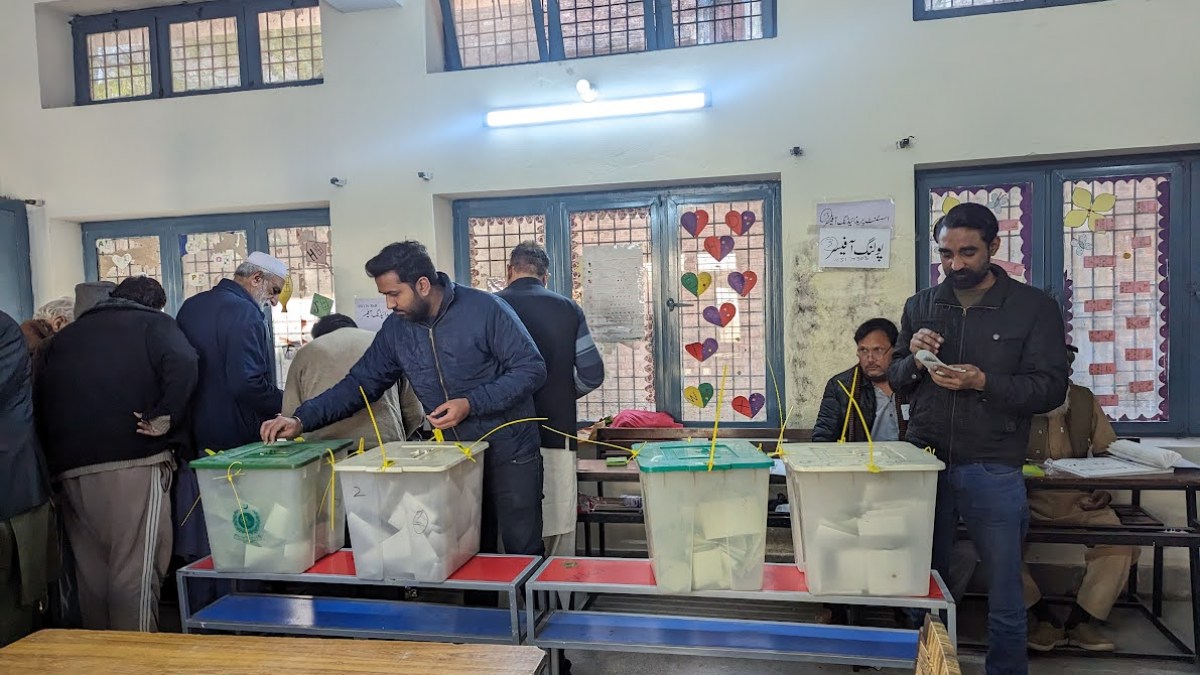A split emerges as Biden struggles to deter attacks on U.S. troops
Seething anger in the Middle East over U.S. support for the Israeli military campaign in Gaza, where thousands of Palestinian civilians have been killed in the last six weeks, has heightened concern among Biden and his deputies that any overreaction to the attacks on U.S. personnel could incite a wider conflict. In conjunction with the airstrikes, administration officials have urged Tehran repeatedly over the past month to rein in the militia groups it supports, cautioning that the United States has “the right” to respond “at a time in place of our choosing.” But those warnings have gone unheeded.
Locations of all 61 attacks on U.S.
troops since the Israel-Gaza war began
Attacks from Oct. 17 to Nov. 17
Source: U.S. Department of Defense
SAMUEL GRANADOS / THE WASHINGTON POST

Locations of all 61 attacks on U.S. troops since the Israel-Gaza war began
Attacks from Oct. 17 to Nov. 17
Baghdad Diplomatic
Support Center
Source: U.S. Department of Defense
SAMUEL GRANADOS / THE WASHINGTON POST
Since Oct. 17, U.S. troops in Iraq and Syria have faced near-daily assault from rocket fire and one-way drones, recording at least 61 incidents and about as many injuries in that span. Pentagon data obtained by The Washington Post shows that the attacks have targeted 10 bases used by American personnel who are spread across both countries.
In response, Biden has authorized three rounds of airstrikes, all in eastern Syria. The most recent, on Nov. 12, targeted sites the Pentagon identified as used by Iran’s Islamic Revolutionary Guard Corps and “Iran-affiliated groups.” A U.S. official said that as many as seven militants were killed, a “rough estimate” as the United States continues to assess the results.
The strikes have destroyed purported warehouses holding weapons and ammunition, a command post and a training facility, officials have said. Yet each operation has failed to slow the drumbeat of hostile activity, which in all cases resumed almost immediately. The 61 attacks on U.S. troops have come at a startling frequency as well: There were about 80 similar incidents between January 2021 and March of this year, the Pentagon has said.
A senior defense official said the Pentagon has provided additional options to the president beyond the actions that have been taken to date. This person affirmed, too, that within the Defense Department, there is growing doubt about the present approach.
In a statement, National Security Council spokesperson Adrienne Watson said that Biden has demonstrated “he will never hesitate to take action to protect U.S. forces” and that the president is “fully prepared to take further measures as needed at any given moment to protect our people.”
Iran has long provided support to militias seeking to dislodge the American presence in Iraq and Syria, where approximately 3,500 troops are deployed to prevent a resurgence of the Islamic State terrorist group. Tehran also backs Hezbollah in Lebanon, whose leaders have threatened to open a new front against Israel, and the Houthi rebels in Yemen. The Pentagon said that Houthis destroyed a $30 million U.S. Reaper drone over the Red Sea in recent days, and U.S. warships have in the last few weeks intercepted weapons fired from Yemen in the direction of Israel.
Christine Abizaid, director of the National Counterterrorism Center, told House lawmakers on Wednesday that, despite the unabated attacks on American personnel, Iran and its proxies are “trying to walk a very fine line in the region.” There appears to be a concerted effort, she said, to avoid “overt actions that risk opening them up to a more direct conflict with Israel or the United States while still exacting costs by enabling anti-U.S. and anti-Israel attacks.”
In their public statements, Defense Department officials have sought to downplay the attacks in Iraq and Syria, describing them as often inaccurate and causing little damage to U.S. infrastructure. The troops who’ve been hurt all have returned to duty, they’ve said, classifying the reported brain injuries and other collateral as “minor.” The United States has also added more air defense systems into the region, which have shot down several of the drones, according to the Pentagon data.
But as the attack count has continued to climb, so too has the concern that it is a matter of time before one claims a U.S. service member’s life.
“I don’t sense any deterrence,” Sen. Kevin Cramer (R-N.D.), a member of the Senate Armed Services Committee, said in an interview. “They keep shooting, waiting for us to respond. We don’t, so they keep shooting. And eventually one of those drones, or one of those missiles or rockets, is going to kill an American. And then we’ll be off to the races.”
“I’m not suggesting we start a full-fledged war with Tehran,” he added. “But I do think our posture has to be a little more aggressive than just strictly defensive, because one of these days, we’re going to miss one of those drones.”
The senior U.S. defense official acknowledged that the Pentagon sees few good alternatives to the measures taken thus far, which, in addition to the limited retaliatory airstrikes and buildup of air-defense weapons, includes the deployment of two aircraft carriers near Israel and Iran. Carrying out strikes in Iraq, for instance, has the potential to exacerbate anti-American sentiment there, where U.S. troops are deployed at the invitation of the government in Baghdad. Direct strikes on Iran would amount to a massive escalation.
The Pentagon continues to refine response options, a U.S. official said.
At a news conference Tuesday, Defense Department spokeswoman Sabrina Singh rejected the suggestion that these sustained attacks on American forces revealed shortcomings in the administration’s deterrence strategy. That the war in Gaza has not spread, she said, is evidence the approach is working.
The three retaliatory operations taken to date, Singh said, are intended “to signal and to message very strongly to Iran, and their affiliated groups, to stop.” When a reporter challenged the assertion, noting that the militia fighters “keep striking” U.S. troops, Singh said the military response has been “very deliberate” and that Iran “is certainly seeing that message.”
Joseph Votel, a retired Army general who as the head of U.S. Central Command oversaw all military operations in the Middle East from 2016 to 2019, said it may be too early to tell if the administration’s strategy can or will stifle the attacks on U.S. troops.
“When you do things to try to change people’s behavior, it takes time for that to set in,” said Votel, now a senior fellow at the Middle East Institute, a think tank. “Now we have to think about the volume and the responsiveness, and how that has an effect over time.”
Whether it’s happening fast enough, he said, is “subject to interpretation.”
Missy Ryan contributed to this report.
Check out our Latest News and Follow us at Facebook
Original Source







